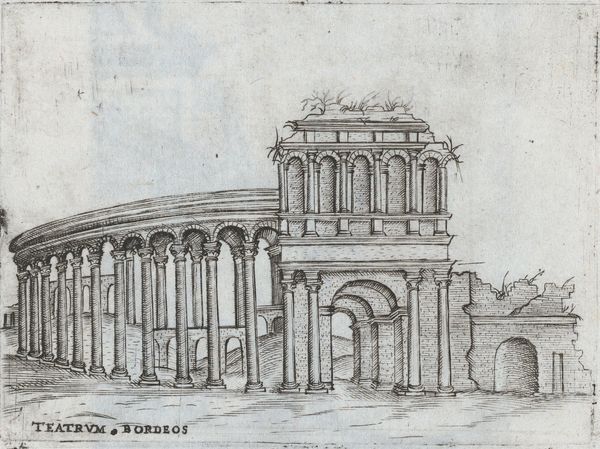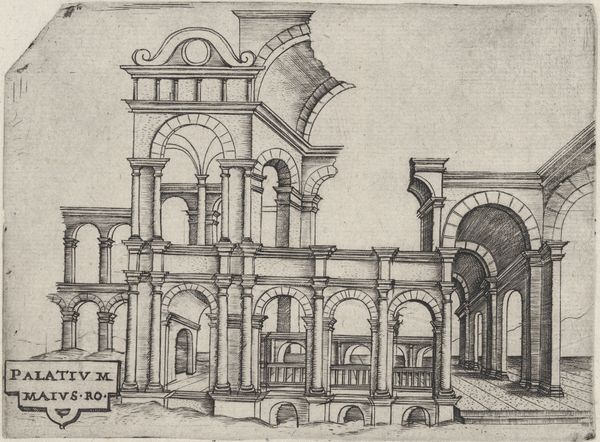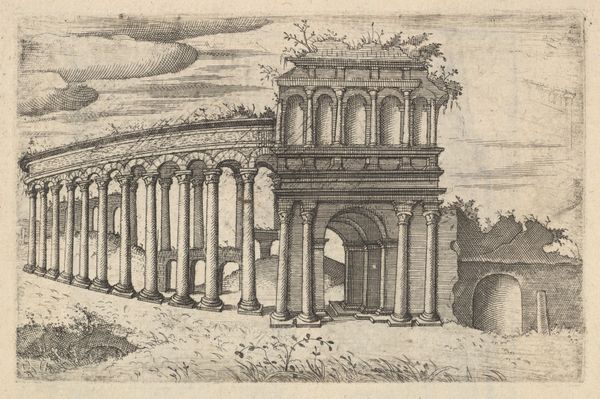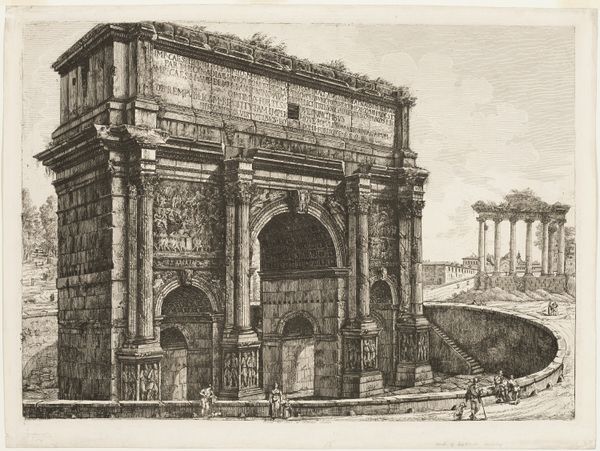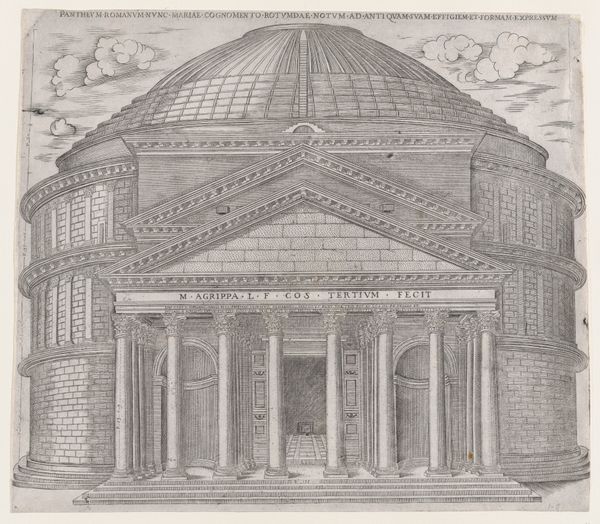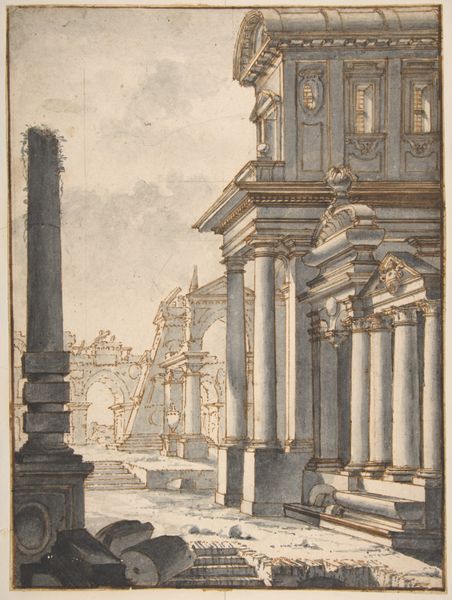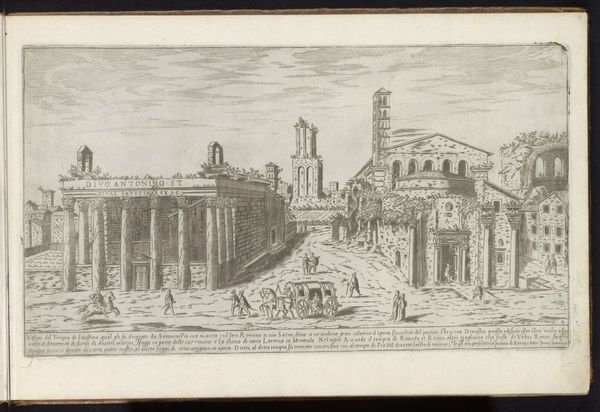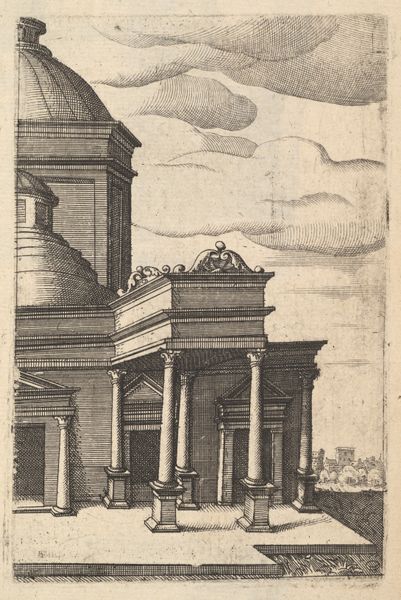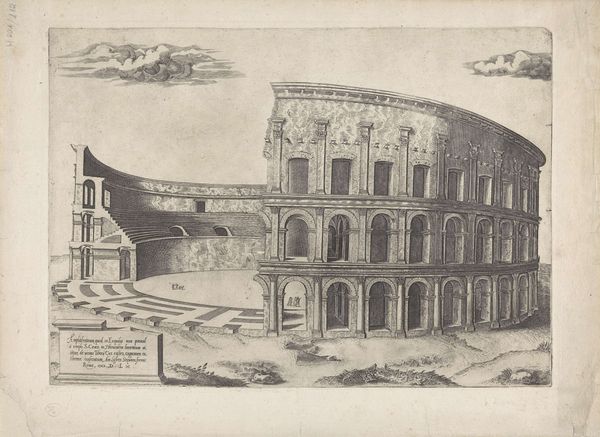![Transitorium Caesaris [formerly Teatrum Bordeos], from a Series of 24 Depicting (Reconstructed) Buildings from Roman Antiquity by Anonymous](/_next/image?url=https%3A%2F%2Fd2w8kbdekdi1gv.cloudfront.net%2FeyJidWNrZXQiOiAiYXJ0ZXJhLWltYWdlcy1idWNrZXQiLCAia2V5IjogImFydHdvcmtzLzgxNTUxZWNkLTA4NGMtNDYwMC1iMWU3LTU5YjE5OWJkMTE4OC84MTU1MWVjZC0wODRjLTQ2MDAtYjFlNy01OWIxOTliZDExODhfZnVsbC5qcGciLCAiZWRpdHMiOiB7InJlc2l6ZSI6IHsid2lkdGgiOiAxOTIwLCAiaGVpZ2h0IjogMTkyMCwgImZpdCI6ICJpbnNpZGUifX19&w=3840&q=75)
Transitorium Caesaris [formerly Teatrum Bordeos], from a Series of 24 Depicting (Reconstructed) Buildings from Roman Antiquity 1530 - 1550
0:00
0:00
drawing, print, etching, architecture
#
drawing
# print
#
etching
#
form
#
geometric
#
line
#
cityscape
#
history-painting
#
italian-renaissance
#
architecture
Dimensions: Sheet: 13 3/8 × 9 5/16 in. (34 × 23.6 cm)
Copyright: Public Domain
Editor: This etching, "Transitorium Caesaris," or "Transit of Caesar," from a series of 24 is a mid-16th-century imagining of Roman architecture by an anonymous Italian Renaissance artist. Curator: What strikes me immediately is the line work; it's incredibly precise and the level of detail achieved through etching—the textures of the stone, the sense of light—it speaks to incredible skill with the medium. Editor: It certainly captures a potent image of lost grandeur. I’m drawn to how the "reconstructed" buildings evoke dialogues about power. What did it mean to depict Roman power during the Renaissance, especially within the Italian states and what was the political significance behind disseminating these images as prints? Curator: Absolutely, the accessibility of prints meant that these depictions weren't confined to elite circles; there was a broader market for visualizing these imagined Roman structures. One has to consider the economic structure that sustained such a large undertaking, who funded the artist and for what purpose? Was it mere aesthetic interest or an investment to showcase a kind of imperial nostalgia through printed architectural fantasies? Editor: The work is an active site of re-imagining that past. Take for example how there seems to be both ruin and rebirth coexisting within this single space. Note the fragile remains to the right, but atop, signs of new vegetal life growing from the building. Curator: Indeed. It also reveals that the act of printmaking—the acid, the copper plate, the press—transformed how architectural knowledge circulated and was consumed. These meticulous lines are an explicit display of the labor put in to manufacture the series, with all of its subtle and obvious geometric complexities. Editor: In the end, by contemplating an etching like "Transitorium Caesaris," we begin to observe not just an architectural structure, but the intricacies of power that have shifted over time as seen through art. Curator: I'm left considering just how labor intersects with legacy; the creation and the recreation.
Comments
No comments
Be the first to comment and join the conversation on the ultimate creative platform.
